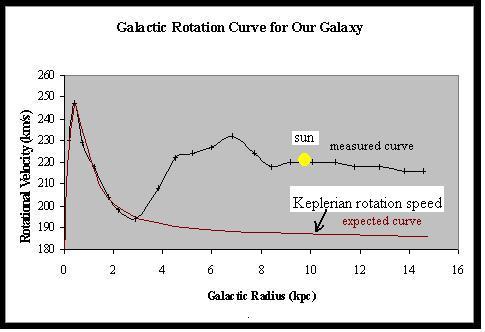T2/a3 = 4(pi)2/(GM),
where G is Newton's gravitational constant. The velocity in orbit is related to the period T and the orbit's size a by
v = 2(pi)a/T .
Substituting this into Kepler's law lets us determine that
M = (av2 )/G.
G = 6.67x10 -11Nm2/kg2
, 1pc = 3.09x1013 km = 3.09x1016m
